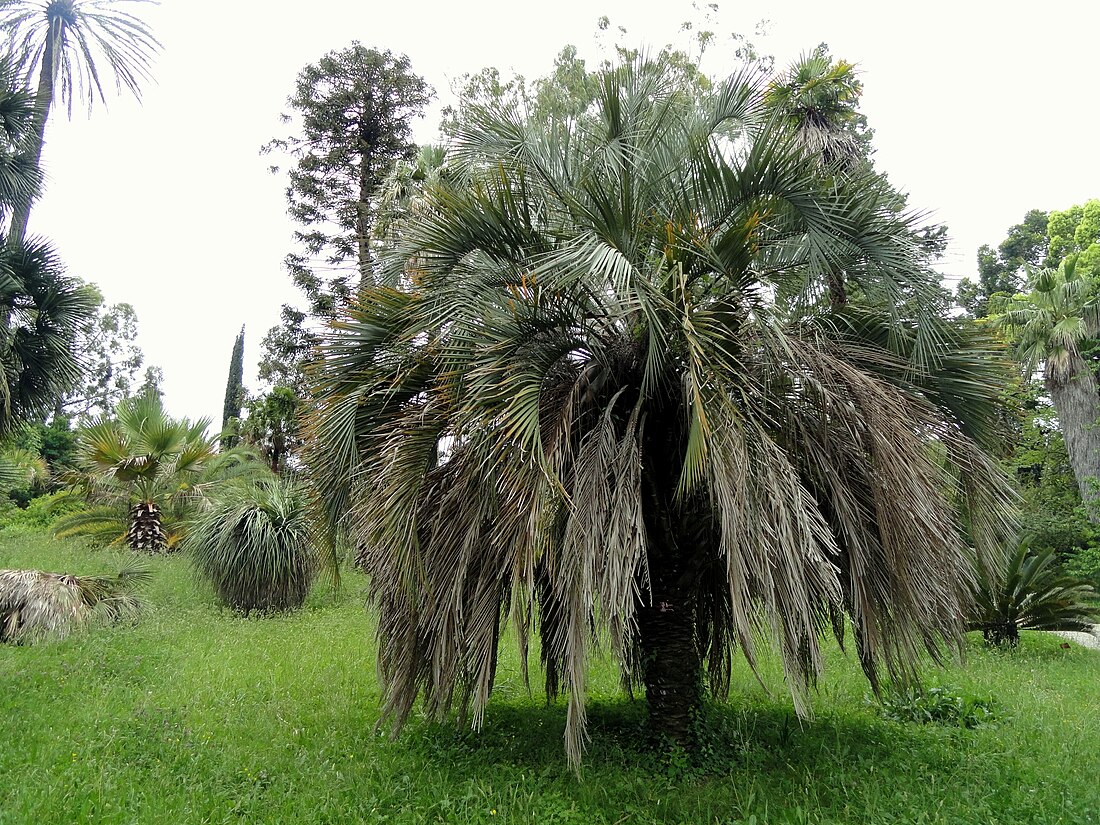Top Qs
Timeline
Chat
Perspective
Butia
Genus of palms From Wikipedia, the free encyclopedia
Remove ads
Butia is a genus of palms in the family Arecaceae, native to the South American countries of Brazil, Paraguay, Uruguay and Argentina.[2] Many species produce edible fruits, which are sometimes used to make alcoholic beverages and other foods. The name is derived from a Brazilian vernacular word for members of the genus.[3]
Remove ads
Description
These are 'feather palms', having pinnate leaves up to 3m long including petiole which usually have a distinct downward arch. The species vary from nearly stemless plants rarely exceeding 40 cm tall (e.g. Butia campicola) to small trees up to 12m tall (e.g. B. yatay).
Butia odorata is notable as one of the hardiest feather palms, tolerating temperatures down to about −10 °C; it is widely cultivated in warm temperate to subtropical regions.
Remove ads
Species
Summarize
Perspective
No longer accepted species:[4][5]
- Butia missionera Deble & Marchiori - Rio Grande do Sul
- Butia noblickii Deble - Corrientes Province of Argentina
- Butia quaraimana Deble & Marchiori - Rio Grande do Sul
- Butia stolonifera (Barb.Rodr.) Becc. - Uruguay
- Butia poni (Haum.) Burret - Misiones Province of Argentina
- Butia sp. nov. - Mato Grosso do Sul
Intergeneric hybrids
- × Butyagrus alegretensis K. Soares (B. lallemantii × Syagrus romanzoffiana)[4]
- × Butyagrus nabonnandii (Prosch.) Vorster (B. odorata × S. romanzoffiana)[9]
- x Butyagrus eriospatha N. Kembry (B. eriospatha x S. romanzoffiana 'Santa Catarina')
Remove ads
References
Wikiwand - on
Seamless Wikipedia browsing. On steroids.
Remove ads








